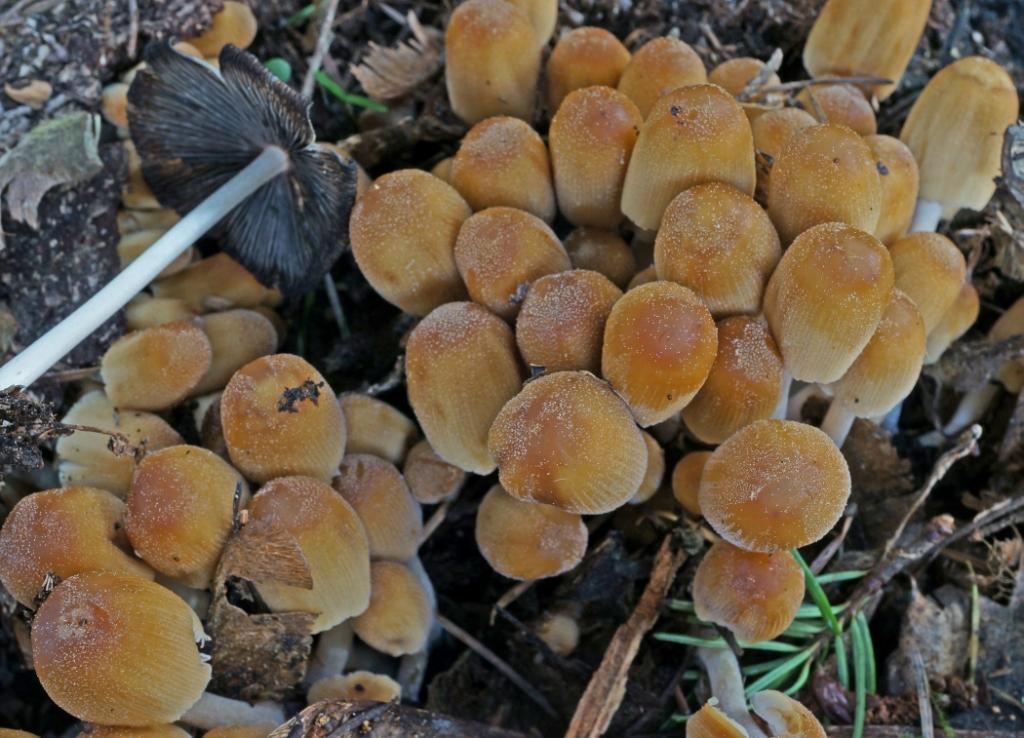Coprinellus micaceus
Scroll Down to see discussion from What is this Mushroom

Sava: One of the most common mushrooms.
Growing in clusters on wood or near wood. Black spores.
Godsavethechese: Coprinellus micaceus?
Richard T: I think so too
Astrid N: Hypholoma fasciculare
Paul W. The "what about ink" hint is certainly telling.
BUT if we are to use the Top Level Key and the Kit Scates Key,
it seems we need to know if the gills are free.
The striations in the cap and the hint certainly point to Coprinus.
Sava: Coprinellus micaceus is correct.
If you said Coprinus micaceus, that would be treated as correct too.
The genus Coprinus was not long ago split into four:
Coprinus, Coprinopsis, Coprinellus, and Parasola.
All are called Inky Caps because their gills deliquesce into black ink.
Google "inky caps" to see what happens to those gills when they age.
The glittering white powder ("mica") is what gives this mushroom its name
and is what distinguishes it from other similar mushrooms.
Hypholoma fasciculare has dark brown spores,
but not black. Also has yellow-green gills (not white-then-black),
is solid (our thing crumbles), has a convex cap (not cylindrical/oval as here),
and its cap is smooth (no mica particles).
All the characters mentioned are worth noticing when you examine a mushroom.
Regarding our use of Kit Scates ID chart,
please note that the first question to ask there is
"Gills free AND cap convex AND cap, stem easily separated?"
For our mushroom here, the answer is NO to this question because the cap is not convex.
In our division into groups A-E, C. micaceus and other coprinoid mushrooms fit into group B ("slim stems").
Paul W: This is definitely good practice.
My Kit Scates key does not mention cap convex for the first row.
What am I missing? In addition the cap looks convex (versus concave).
Perhaps you'll tell me the cap is cylindric not convex???
Sava: Kit Scates does not mention "cap convex",
but we do! The reason: you're not going to check gill attachment in a Coprinus---
it's ofthen a little difficult (because of the cap shape),
and the gills are actually not always free.
You will recognize a Coprinus by the shape of its cap and the inky gills in mature specimens.
As for the cap shapes,
forget your Math! The shapes are not "convex" and "concave",
but: convex, conical, cylindrical, plane, etc.
Check your book and see what it says about the shapes.
If you have another book, check it too---the odds are it will serve you a different set of shapes.
If you like your technical terms crisply defined, you will moan a lot while studying mushrooms.
But you won't be alone.

